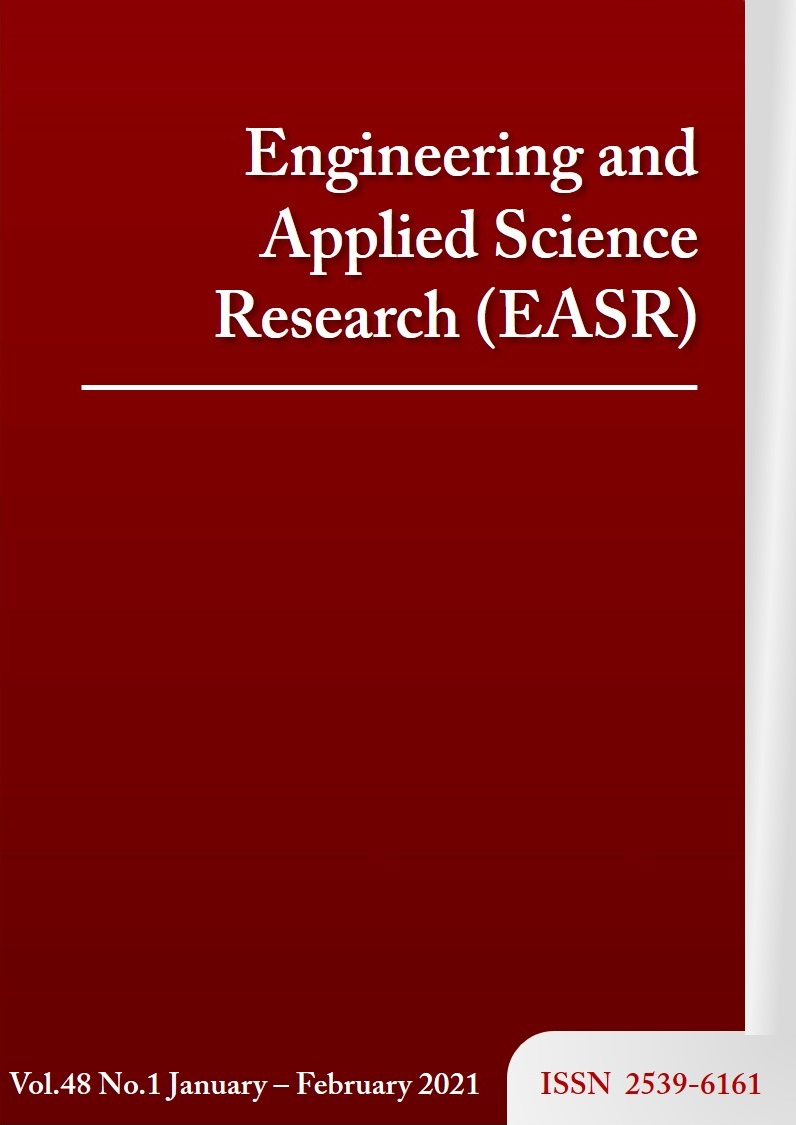Using a neural network model to determine electricity sales under renewable energy systems penetration consideration
Main Article Content
Abstract
Business systems will experience new data-driven models for their performance evaluation in the coming years, especially systems with stochastic characteristics. This development will benefit experts in energy management because more problems will be solved using machine learning algorithms - such as artificial neural networks (ANN). This research develops a machine-learning model for electricity sales using a single hidden layer ANN model. The developed model consists of six input parameters, including the number of renewable energy systems and households. This research used principal component analysis (PCA) algorithm to reduce the inputs to three parameters to improve the model performance. A TOPSIS (Technique for Order of Preference by Similarity to Ideal Solution) method was used to select the most suitable predictive models between SVR (support vector regression) and ANN. Data sets from a community in Lagos, Nigeria, were used to test the developed model performance. This research observed that a SVR model with a linear function performed better than an SVR model with a radial basis function or polynomial kernel. On the other hand, an ANN with 15 neurons outperformed ANN models with fewer nodes. The selected ANN model training and testing mean square errors are 0.00007 and 0.00028, respectively. This research recommends PCA for input parameters selection during electricity sales prediction based on the developed sales model performance.
Article Details
This work is licensed under a Creative Commons Attribution-NonCommercial-NoDerivatives 4.0 International License.
References
Ghajar RF, Khalife J. Cost/benefit analysis of an AMR system to reduce electricity theft and maximise revenues for Electricite du Liban. Appl Energ. 2003;76(1-3):25-37.
Mayr D, Schmid E, Trollip H, Zeyringer M, Schmidt J. The impact of residential photovoltaic power on electricity sales revenues in Cape Town, South Africa. Util Pol. 2015;36:10-23.
Gross R, Blyth W, Heptonstall P. Risks, revenues and investment in electricity generation: why policy needs to look beyond costs. Energ Econ. 2010;32(4):796-804.
Cai DWH, Adlakha S, Low SH, De Martini P, Chandy KM. Impact of residential PV adoption on retail electricity rates. Energ Pol. 2013;62:830-43.
Green RJ, Léautier TO. Do costs fall faster than revenues? Dynamics of renewables entry into electricity markets. TSE Working Papers 15-591, Toulouse School of Economics (TSE). 2015:1-45.
Lund H, Andersen AN. Optimal designs of small CHP plants in a market with fluctuating electricity prices. Energ Convers Manag. 2005;46(6):893-904.
Satchwell A, Mills A, Barbose G, Wiser R, Cappers P, Darghouth N. Financial impacts of net- metered PV on utilities and ratepayers: a scoping study of two prototypical US utilities. USA: U.S. Department of Energy; 2014.
Akinyele D, Olatomiwa L, Ighravwe DE, Babatunde OM, Monyei C, Onile, A. Evaluation of solar PV microgrid deployment sustainability in rural areas: a fuzzy STEEP approach. 2019 IEEE PES/IAS PowerAfrica; 2019 Aug 20-23; Abuja, Nigeria. USA: IEEE; 2019. p. 593-8.
Berry D. The impact of energy efficiency programs on the growth of electricity sales. Energ Pol. 2008;36(9):3620-5.
Theocharides S, Makrides G, Venizelou V, Kaimakis P, Georghiou GE. PV Production forecasting model based on artificial neural networks (ANN). 33rd European Photovoltaic Solar Energy Conference and Exhibition; 2017 Sep 25-29; Amsterdam, Netherlands. München: WIP; 2017. p. 1830-94.
Mustafa M, Taib M, Murat Z, Sulaiman N. Comparison between KNN and ANN classification in brain balancing application via spectrogram image. J Comput Sci Comput Math. 2012;2(4):17-22.
Oyebode O, Ighravwe DE. Urban water demand forecasting: a comparative evaluation of conventional and soft computing techniques. Resour. 2019;8(3):156.
Anyaeche CO, Ighravwe DE. Predicting performance measures using linear regression and neural network: a comparison. Afr J Eng Res. 2013;1(3):84-9.
Asparouhov T, Muthén B. Weighted least squares estimation with missing data. Mplus [Internet]. 2010;1-10. Available form: https://www.statmodel.com/download/GstrucMissingRevision.pdf.
Collins LM, Schafer, JL, Kam CM. A comparison of inclusive and restrictive strategies in modern missing data procedures. Psychol Methods. 2001;6(4):330-51.
Silva-Ramírez EL, Pino-Mejías R, López-Coello M, Cubiles-de-la-Vega MD. Missing value imputation on missing completely at random data using multilayer perceptron. Neural Network. 2011;24(1):121-9.
Kleynhans T, Montanaro M, Gerace A, Kanan C. Predicting top-of-atmosphere thermal radiance using MERRA-2 atmospheric data with deep learning. Remote Sens. 2017;9(11):1133.
Bhattacharyya I. Support vector regression or SVR [Internet]. 2018 [cited 2019 Oct 4]. Available from: https://medium.com/coinmonks/support-vector-regression-or-svr-8eb3acf6d0ff.
Hotelling H. Analysis of a complex of statistical variables into principal components. J Educ Psychol. 1933;24(6): 417-41.
Kramer MA. Nonlinear principal component analysis using auto-associative neural networks. AIChE J. 1991;37(2): 233-43.
Ringnér M. What is principal component analysis? Nat Biotechnol. 2008;26(3):303-4.
Smith LI. A tutorial on principal components analysis. Technical Report. New Zealand: University of Otago; 2002. Report No.: OUCS-2002-12.
Su CT, Tong LI. Multi-response robust design by principal component analysis. Total Qual Manag. 1997;8(6);409-16.
Behzadian M, Otaghsara SK, Yazdani M, Ignatius J. A state-of the-art survey of TOPSIS applications. Expert Syst Appl. 2012;39(17):13051-69.
Peng Y, Wang G, Kou G, Shi Y. An empirical study of classification algorithm evaluation for financial risk prediction. Appl Soft Comput. 2011;11(2):2906-15.
Ighravwe DE, Babatunde MO. Selection of a mini-grid business model for developing countries using CRITIC-TOPSIS with interval type-2 fuzzy sets. Decis Sci Lett. 2018;7(4):427-42.
Lozano-Minguez E, Kolios AJ, Brennan FP. Multi-criteria assessment of offshore wind turbine support structures. Renew Energ. 2011;36(11):2831-7.
Ighravwe DE, Mashao D. Development a system dynamic model for utilities revenue evaluation under distributed energy resources. The 2019 General Meeting and PIESA- IERE South Africa Forum; 2019 Oct 28-31; Sun City, South Africa.
Propert P. Victoria Island Neighbourhood Guide [Internet]. 2017. [cited 2019 Oct 10]. Available from: https://www.privateproperty.com.ng/news/victoria-island-neighbourhood-guide/.
Pedregosa F, Varoquaux G, Gramfort A, Michel V, Thirion B, Grisel O, et al. Scikit-learn: machine learning in Python. J Mach Learn Res. 2011;12:2825-30.



